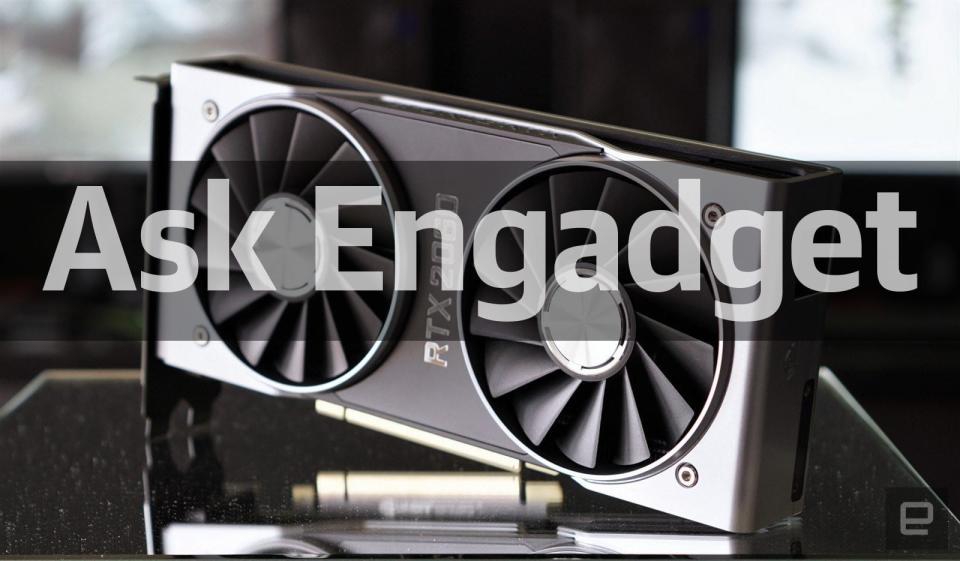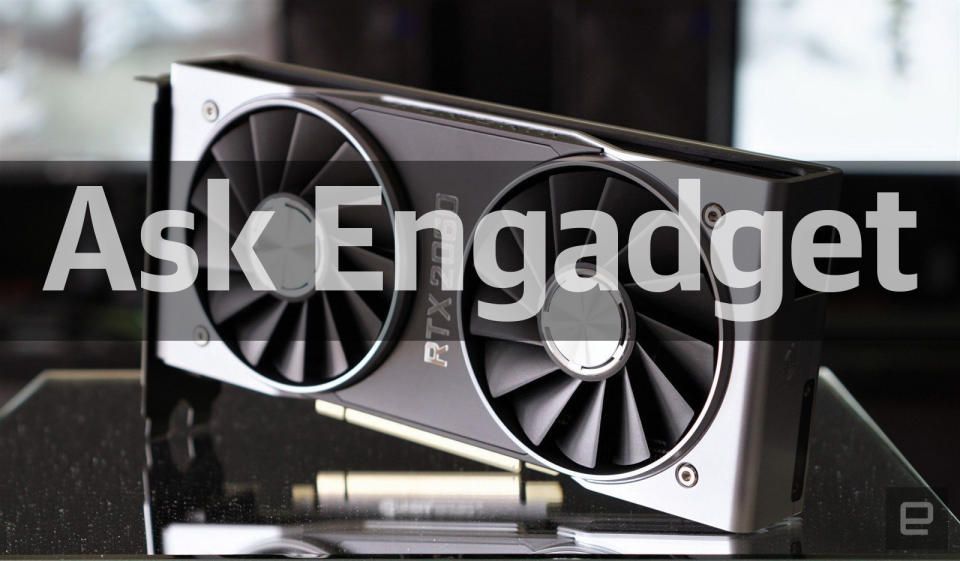Ask Engadget: Do I need a ray-tracing GPU?
And is it worth paying a premium?
The support shared among readers in the comments section is one of the things we love most about the Engadget community. Over the years, we've known you to offer sage advice on everything from Chromecasts and cameras to drones and smartphones. In fact, our community's knowledge and insights are a reason why many of you participate in the comments.
We truly value the time and detail you all spend in responding to questions from your fellow tech-obsessed commenters, which is why we've decided to bring back the much-missed "Ask Engadget" column. This week's question comes to us from a reader who's wondering about ray tracing. Weigh in with your advice in the comments -- and feel free to send your own questions along to ask@engadget.com!
Do I need a ray-tracing GPU?

Steve Dent
Associate Editor
Every gamer in the market for a PC or graphics card is asking themselves the same thing. It's a potentially costly decision. The only option right now is NVIDIA's new RTX family, and the cards come at a premium. For instance, the RTX 2060 GPU costs $349, which is $100 more than the GTX 1060 did at launch. The RTX 2080 is $800, compared to $600 for the GTX 1080 when it arrived.
If you measure performance by how fast games and graphics programs run, the new cards are anywhere from 10 to 30 percent faster than the old ones. For example, at 1440p on the "highest" setting on Shadow of the Tomb Raider, you can expect to get around 84 fps on the RTX 2080 compared to 63 fps on GTX 1080 -- a decent but not enormous increase.
You're paying the extra cash, then, mostly for the ray tracing, which gives you reflections, shadows and other effects that make games look better. Unfortunately, there's exactly one game that supports ray tracing: Battlefield V. Others, like Shadow of the Tomb Raider, are coming later, but we still don't know when. So far, over six months have elapsed since the cards were first announced, with no additional games available. Another feature promised by RTX called DLSS -- another way to make games look nicer by smoothing the edges -- is also only available on one title (wait for it): Battlefield V.
It sucks to pay for a feature you can't use, but ray tracing in games is probably here to stay. For example, AMD has promised to come up with its own ray tracing system on future Radeon GPUs, showing it believes in the idea, too. That brings up another problem, however. If both GPU manufacturers have their own, proprietary ray tracing schemes, that makes things complicated for both game developers and buyers.
Which brings us back to your question. If you're in the market for a new card anyway and can afford it, then sure, purchase the RTX GPU that fits your needs and budget. You will get a speed boost, and by the end of the year, should be able to choose from at least a half-dozen games that support ray tracing and/or DLSS. If you're happy with the card you have now, though, it might be best to wait for the promised games and see how they perform. And now, you have another option: NVIDIA just released the GTX 1660 Ti card with more speed but no ray tracing and a lower price.
Update 2/24/2019 10:36 AM: The article was updated to reflect the fact that NVIDIA's GTX 1660 Ti GPU is no longer a rumor, but an actual product.




